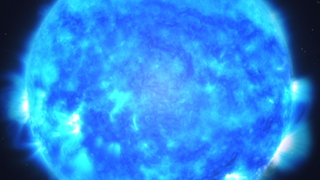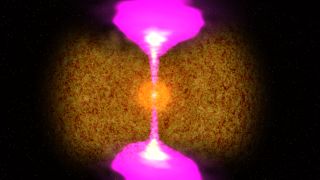A Trio of Swift Bursts Form A New Class of GRBs
GRBs are the most luminous and mysterious explosions in the universe. The blasts emit surges of gamma rays — the most powerful form of light — as well as X-rays, and they produce afterglows that can be observed at optical and radio energies. Swift, Fermi and other spacecraft detect an average of about one GRB each day.
Traditionally, astronomers have recognized two GRB types, short and long, based on the duration of the gamma-ray signal. Short bursts last two seconds or less and are thought to represent a merger of compact objects in a binary system, with the most likely suspects being neutron stars and black holes. Long GRBs may last anywhere from several seconds to several minutes, with typical durations falling between 20 and 50 seconds. These events are thought to be associated with the collapse of a star several times the sun's mass and the resulting birth of a new black hole.
Both scenarios give rise to powerful jets that propel matter at nearly the speed of light in opposite directions. As they interact with matter in and around the star, the jets produce a spike of high-energy light.
A detailed study of GRB 111209A, which erupted on Dec. 9, 2011, and continued to produce high-energy emission for an astonishing seven hours, making it by far the longest-duration GRB ever recorded.
Another event, GRB 101225A, exploded on Christmas Day in 2010 and produced high-energy emission for at least two hours. Subsequently nicknamed the "Christmas burst," the event's distance was unknown, which led two teams to arrive at radically different physical interpretations. One group concluded the blast was caused by an asteroid or comet falling onto a neutron star within our own galaxy. Another team determined that the burst was the outcome of a merger event in an exotic binary system located some 3.5 billion light-years away.
Using the Gemini North Telescope in Hawaii, a team led by Andrew Levan at the University of Warwick in Coventry, England, obtained a spectrum of the faint galaxy that hosted the Christmas burst. This enabled the scientists to identify emission lines of oxygen and hydrogen and determine how much these lines were displaced to lower energies compared to their appearance in a laboratory. This difference, known to astronomers as a redshift, places the burst some 7 billion light-years away.
Levan and his colleagues also examined 111209A and the more recent burst 121027A, which exploded on Oct. 27, 2012. All show similar X-ray, ultraviolet and optical emission and all arose from the central regions of compact galaxies that were actively forming stars. The astronomers conclude that all three GRBs constitute a hitherto unrecognized group of "ultra-long" bursts.
To account for the normal class of long GRBs, astronomers envision a star similar to the size sun's size but with many times its mass. The mass must be high enough for the star to undergo an energy crisis, with its core ultimately running out of fuel and collapsing under its own weight to form a black hole. Some of the matter falling onto the nascent black hole becomes redirected into powerful jets that drill through the star, creating the gamma-ray spike, but because this burst is short-lived, the star must be comparatively small.
Because ultra-long GRBs persist for periods up to 100 times greater than long GRBs, they require a stellar source of correspondingly greater physical size. Both groups suggest that the likely candidate is a supergiant, a star with about 20 times the sun's mass that still retains its deep hydrogen atmosphere, making it hundreds of times the sun's diameter.
Watch this video on YouTube.

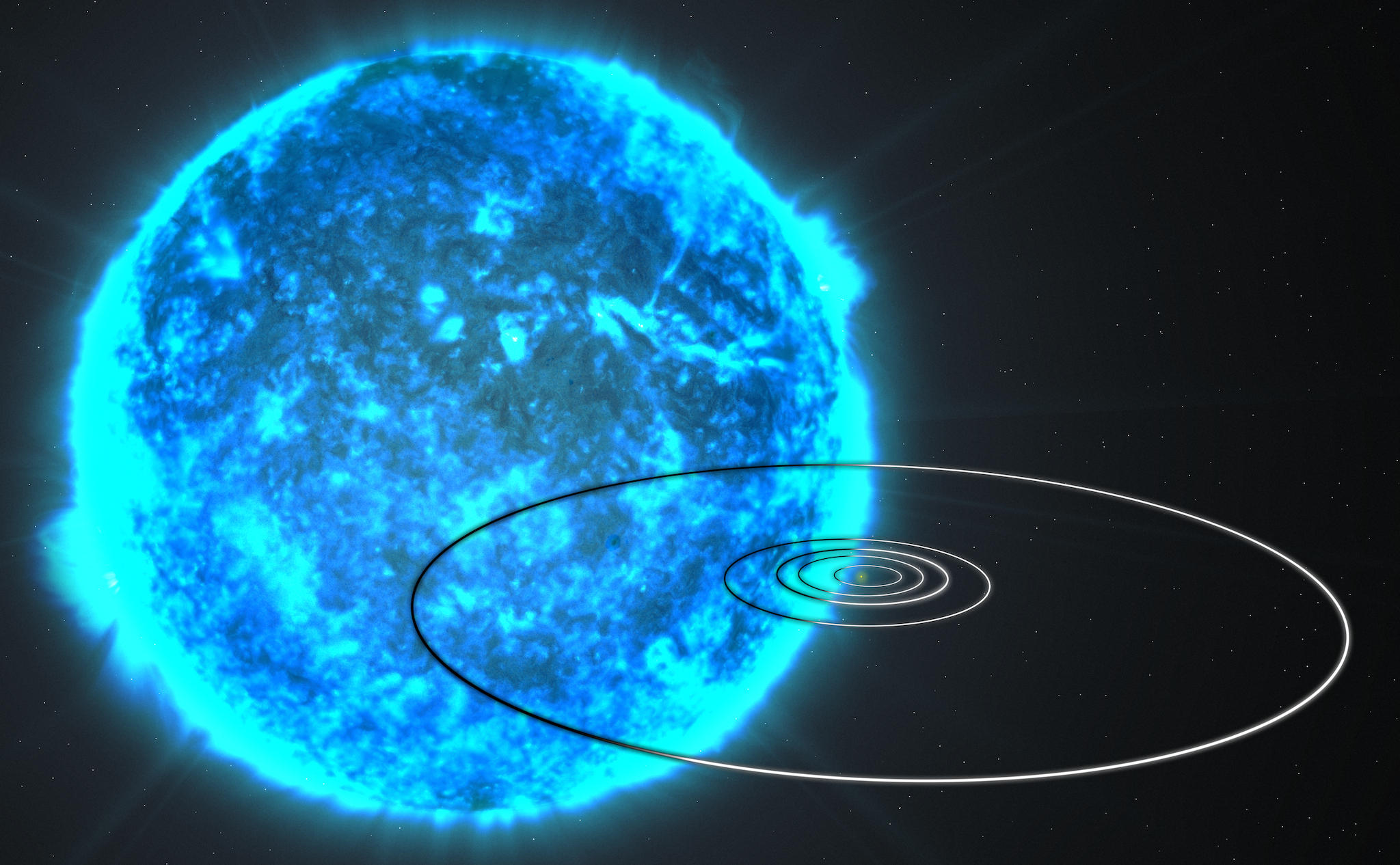

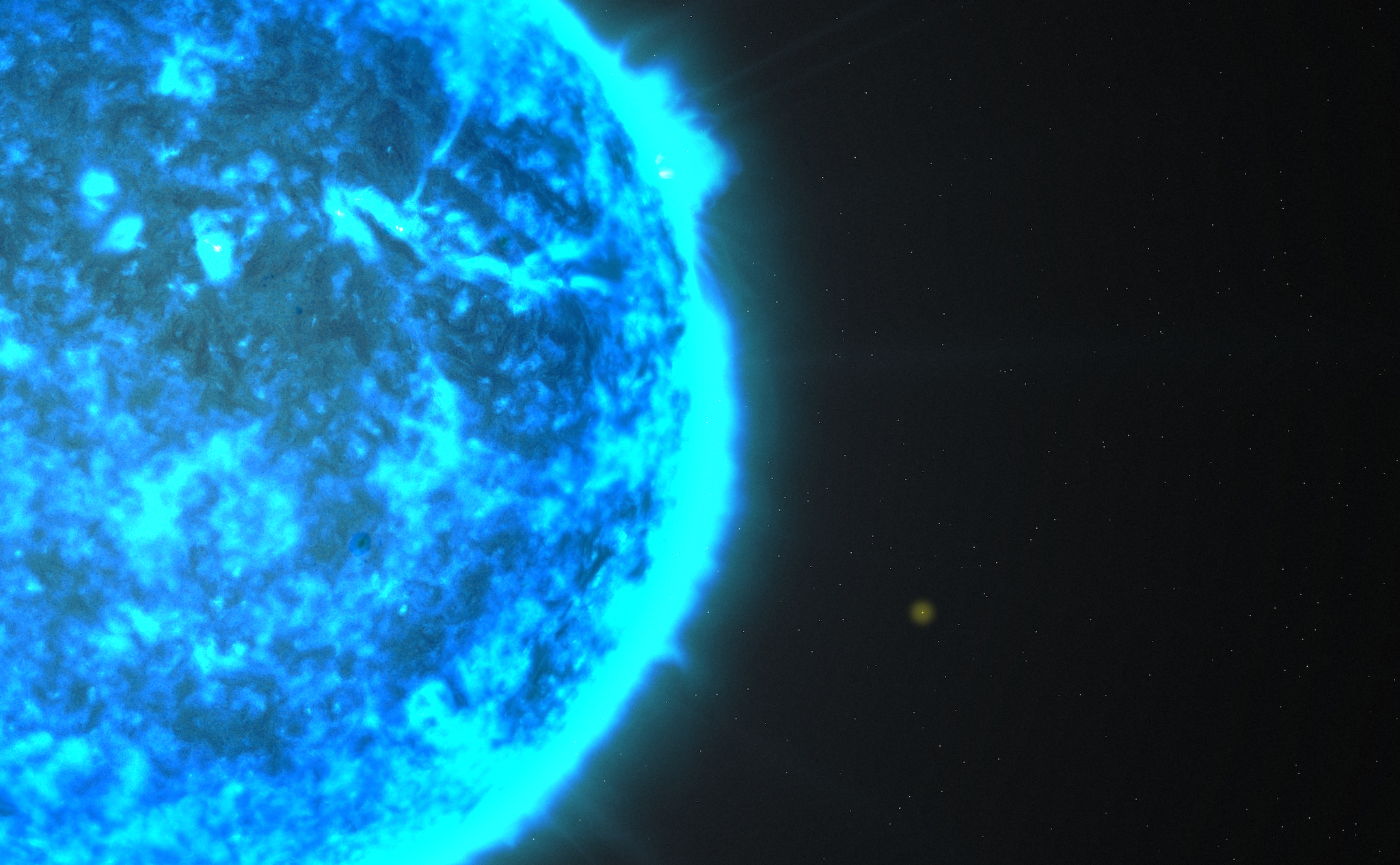
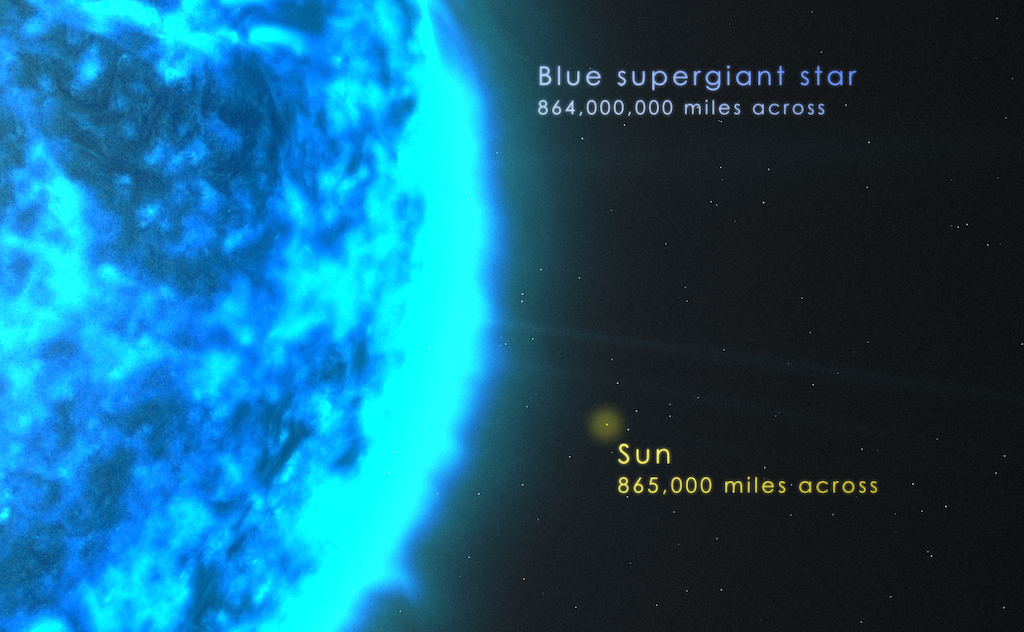
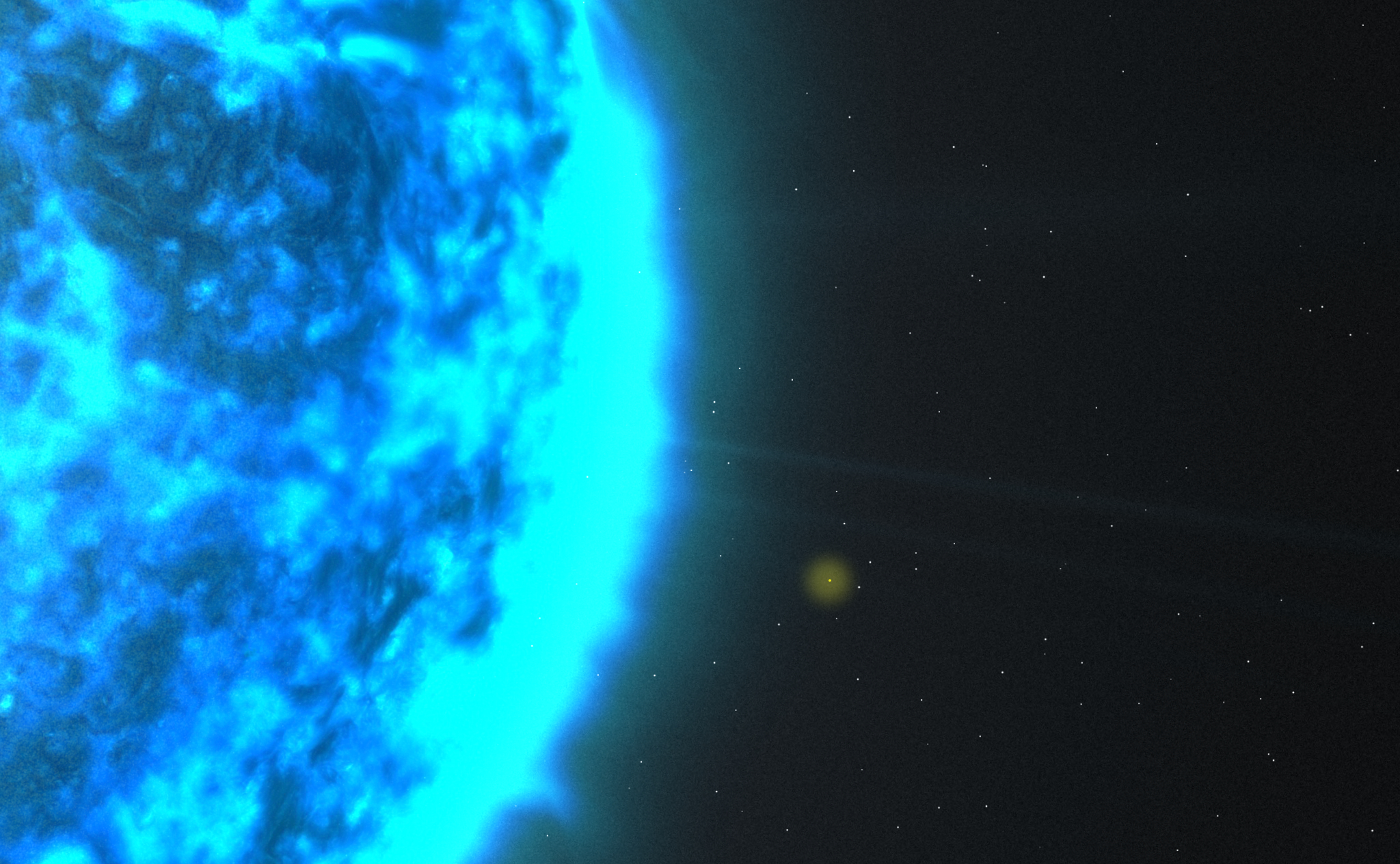

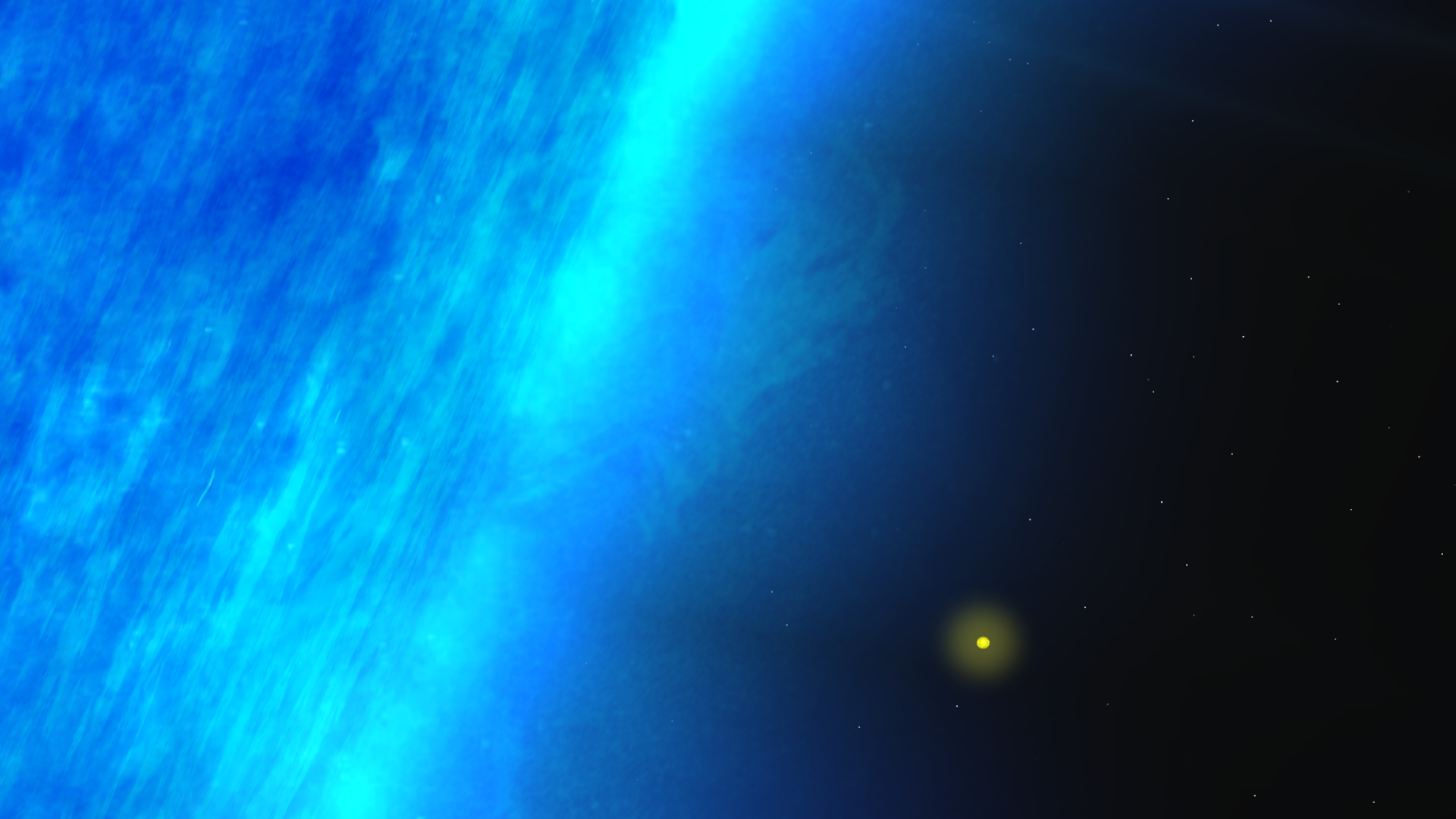
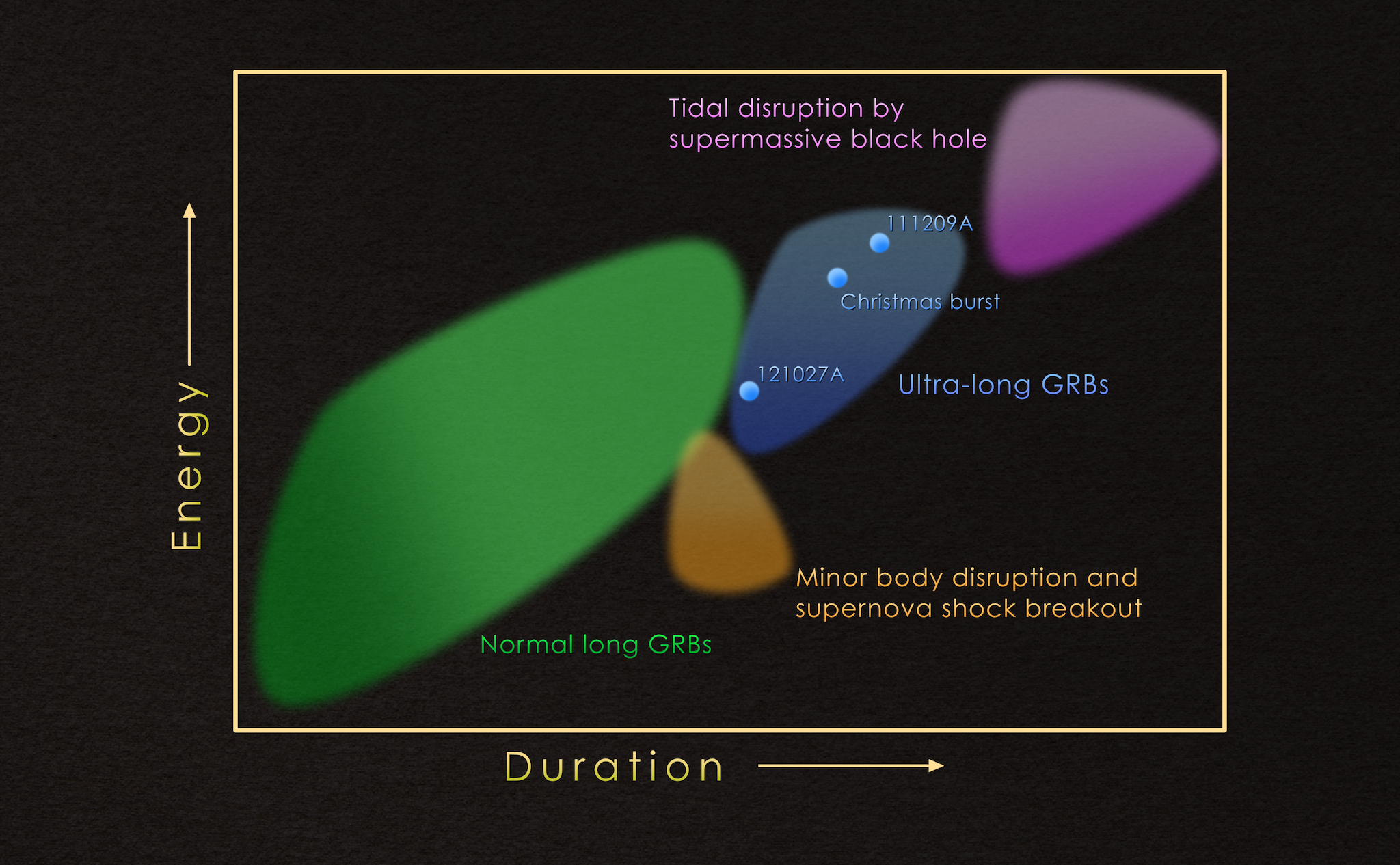

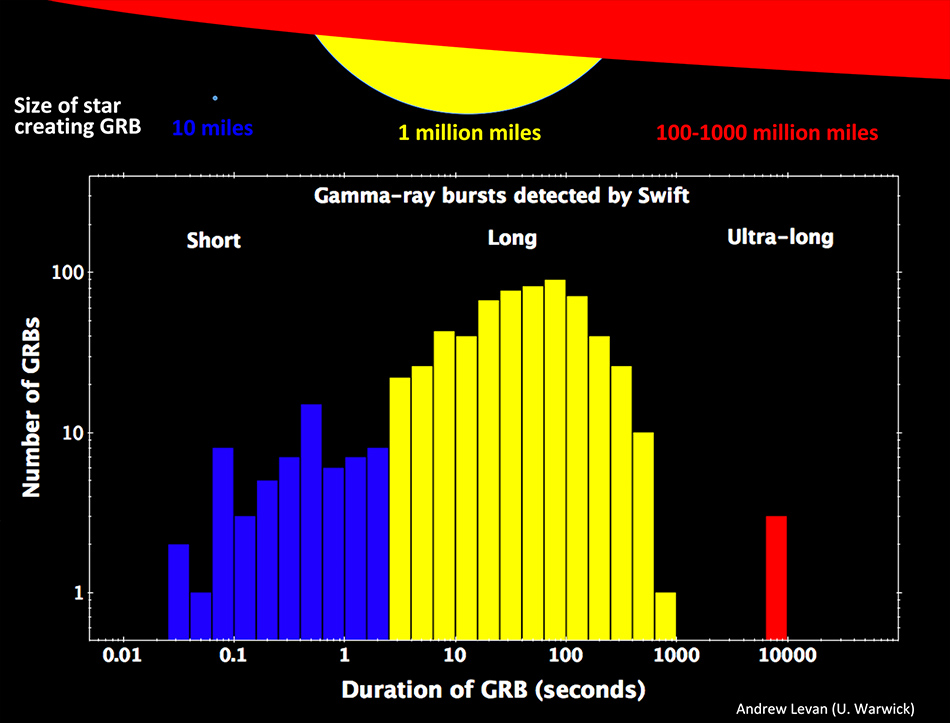
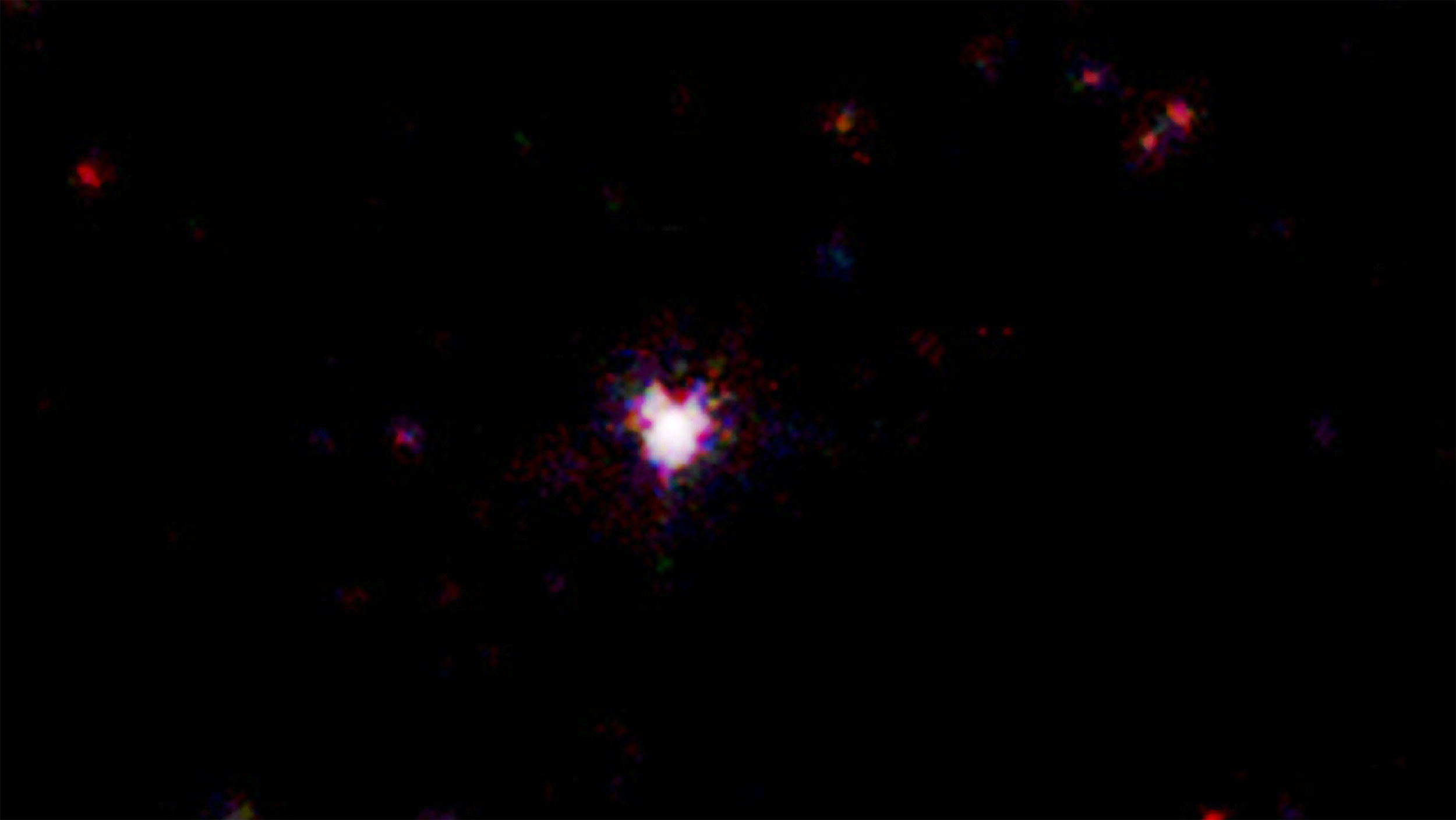
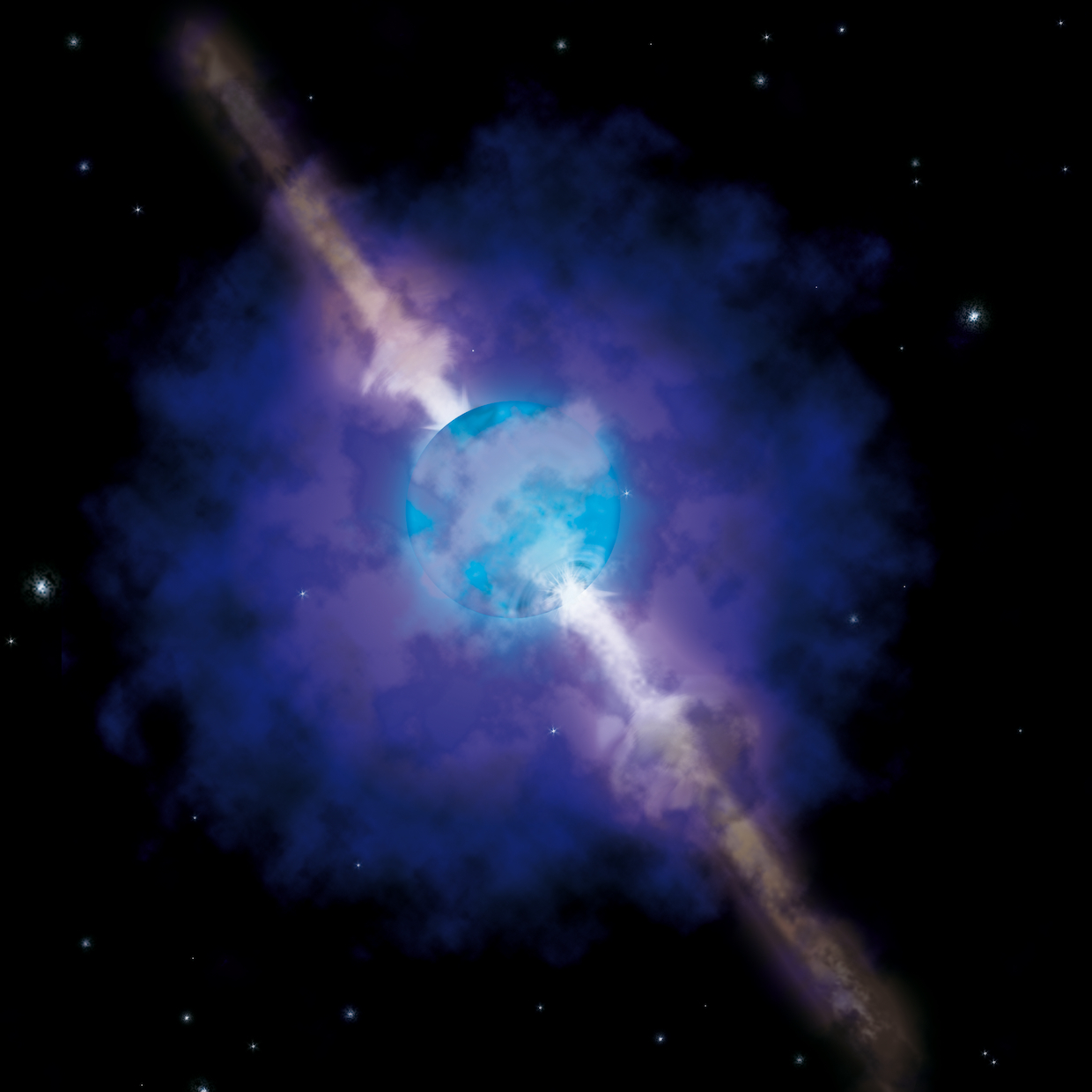
Related
For More Information
Credits
Scott Wiessinger (USRA): Video Editor
Scott Wiessinger (USRA): Producer
Bruce Gendre (French National Center for Scientific Research): Scientist
Andrew Levan (University of Warwick): Scientist
Francis Reddy (Syneren Technologies): Writer
NASA's Goddard Space Flight Center. However, individual items should be credited as indicated above.
http://arxiv.org/abs/1212.2392
Short URL to share this page:
https://svs.gsfc.nasa.gov/11250
Mission:
Swift
This item is part of these series:
Narrated Movies
Astrophysics Stills
Astrophysics Features
Goddard TV Tape:
G2013-042 -- Swift Blue Supergiant Stars Ultra-long GRB
Keywords:
SVS >> HDTV
SVS >> Music
GCMD >> Earth Science >> Spectral/Engineering >> Gamma Ray
SVS >> Gamma Ray Burst
SVS >> Astrophysics
SVS >> Edited Feature
SVS >> Space
SVS >> Swift
SVS >> Supernova
SVS >> Star
NASA Science >> Universe
GCMD keywords can be found on the Internet with the following citation: Olsen, L.M., G. Major, K. Shein, J. Scialdone, S. Ritz, T. Stevens, M. Morahan, A. Aleman, R. Vogel, S. Leicester, H. Weir, M. Meaux, S. Grebas, C.Solomon, M. Holland, T. Northcutt, R. A. Restrepo, R. Bilodeau, 2013. NASA/Global Change Master Directory (GCMD) Earth Science Keywords. Version 8.0.0.0.0
